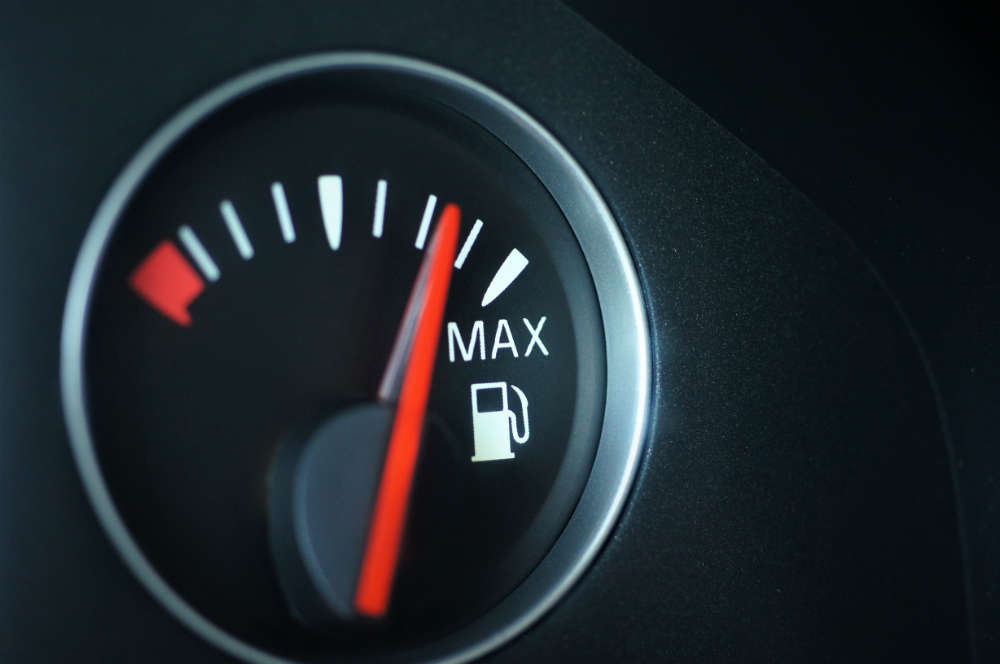Driving and then realizing that you’re out of gas is a bummer.
But if you then put gas in your car and the needle on the dashboard is not moving, that’s even worse!
If that happens to you, you have some problems with your fuel gauge.
A faulty fuel gauge is a common problem with all cars, not only Porsche 944 models.
In this article, you’ll find out the root of the fuel gauge problem and learn what to do if you ever find yourself in that situation. Let’s get started!
Advertising links are marked with *. We receive a small commission on sales, nothing changes for you.
What Is a Fuel Gauge Anyways?

Let’s start by defining the gauge. Then, if you understand how it works, you’ll be able to discover an issue if one exists.
And you might even have a solution right there and then!
A fuel gauge is a device that shows how much gasoline there is in a tank.
Fuel gauges are typically used in vehicles, although they may be found in any tank.
There are two parts of any gauge in automobiles: The transmitting or sending unit and the indicator.
The transmitting unit commonly uses a float coupled to a potentiometer with a printed ink pattern.
The float decreases as the tank empties, sliding a movable contact along with the resistor and increasing its resistance.
In addition, when the resistance reaches a certain level, some vehicles will display a “low fuel” light.
On the other hand, the indicator unit monitors and shows the electrical current passing through the transmitting unit.
The needle points to “F” when the tank level is high and maximum current is flowing, signifying a full tank.
The needle indicates “E” when the tank is empty and the least current flows, representing an empty tank.
We know now that a problem could be in the sending unit. The problem is often not in the indicator itself.
A defective fuel gauge sender might cause the gauge to jump around or provide an incorrect value.
The gauge may appear three-quarters full, only to change to a half-full a few minutes later. Of course, it can be vice versa; the gauge may appear full, only to climb higher a short time later.
Let’s explore the problem of a faulty sending unit further.
A Fuel Level Sending Unit
You can find the fuel level transmitting device in the gasoline tank. It transmits a continuous signal that indicates how much fuel you have left in the tank.
The fuel level sensor in most systems will have a mechanical arm that extends to the top of the gasoline inside the tank.
It will float on top of the gas, and the signal strength from the transmitting device will diminish as the arm travels down.
Such information is finally delivered to the fuel level gauge for driver awareness.
The dashboard light will turn on when the arm drops low enough, signaling the motorist to pull over for gas.
What Are The Signs and Symptoms Of a Faulty Fuel Level Transmitting Unit?
The fuel gauge will stop working if the fuel level transmitting unit malfunctions. As a result, the check engine light may appear in some cars.
If the check engine light does illuminate, the recorded onboard diagnostic (OBD) fault codes will be related to the fuel level sensor.
There are no more predicted symptoms because the gasoline tank level has no bearing on them.
Can I Drive With a Malfunctioning Fuel Level Transmitting Unit?
Well… Yes. You can drive the car without the fuel gauge.
Most individuals use the trip meter and fill up their gas tank when they reach their desired miles.
Carrying gasoline or diesel fuel inside the vehicle or in the trunk poses the greatest danger.
If you’re carrying fuel in case you run out, keep it outside the vehicle. Internal vehicle fumes can cause you harm.
How Frequently Should I Replace the Fuel Level Sending Units?
Fuel-level transmitting devices are seldom defective. Therefore, they need no maintenance throughout their lives.
Most modern automobiles will never experience a transmitting unit failure, so that is good news, huh?!
How Can I Fix the Sending Unit?
First, you have to remove the sending unit and disassemble it. Now you can follow the steps below.
The process of “fixing” it is cleaning. If you have any physical damages, please see a mechanic.
It looks something like this…
It has a copper earth wire and one thin wire that travels the length of the unit and then back up the opposite side. The long thin wire, in reality, seems to be two separate wires, yet it crosses from one side of the assembly to the other.
A cork-like float is supported by this wire, which has two electrical connections on each side. The unit measures the electrical circuit’s resistance depending on where the float is located.
The sender also closes a contact at the bottom of the unit to activate the low fuel warning light.
Check the active wire’s integrity. The float should be able to travel up and down the wire easily.
Check both the active wire and the earth’s solders at either end where the wire links.
You could try to repair the float or wires, but it’s probably easier to get a new sender unit because it’s rather sensitive.
With some emery cloth or fine glass paper, lightly sand the active wire and all of the contacts, taking care not to rub too hard.
After that, lightly spray some WD-40 on the wires and contacts and the external electrical connections where the lug joins and let it dry.
Conclusion
To sum it all up – the problems can be numerous. But, the problem is often in the sending unit.
Now that you know where the problem of your troubles may lie, you can act accordingly!
Fix it yourself or take it to the mechanic if you feel safer that way for your Porsche 944.

Luna Meschiari is a full-blooded car nut who is well known to local garages, as each article is meticulously researched and peppered with the latest piece of information. Guess what car she’s driving right now? A RAV4 2021 Hybrid. But her heart also sleeps for pickups like the F-150. Get to know Luna better on the about us page.
Advertising links are marked with *. We receive a small commission on sales, nothing changes for you.
